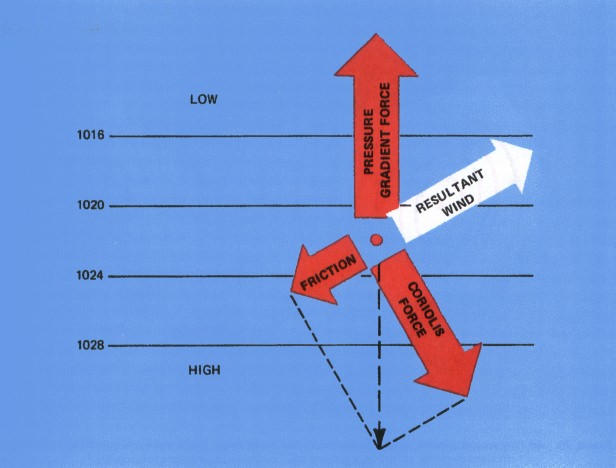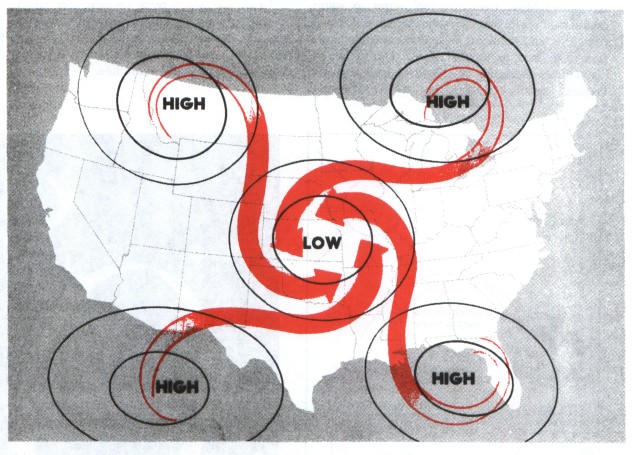Aviation Weather
full text of the classic FAA guide
FRICTION
Friction between the wind and the terrain surface slows the wind. The rougher the terrain, the greater is the frictional effect. Also, the stronger the wind speed, the greater is the friction. One may not think of friction as a force, but it is a very real and effective force always acting opposite to wind direction.
As frictional force slows the windspeed, Coriolis force decreases. However, friction does not affect pressure gradient force. Pressure gradient and Coriolis forces are no longer in balance. The stronger pressure gradient force turns the wind at an angle across the isobars toward lower pressure until the three forces balance as shown in figure 27. Frictional and Coriolis forces combine to just balance pressure gradient force. Figure 28 shows how surface wind spirals outward from high pressure into low pressure crossing isobars at an angle.


The angle of surface wind to isobars is about 10° over water increasing with roughness of terrain. In mountainous regions, one often has difficulty relating surface wind to pressure gradient because of immense friction and also because of local terrain effects on pressure.
Table of Contents
Previous Section: The General Circulation
Next Section: The Jet Stream
A PDF version of this book is available here. You may be able to buy a printed copy of the book from amazon.com.
